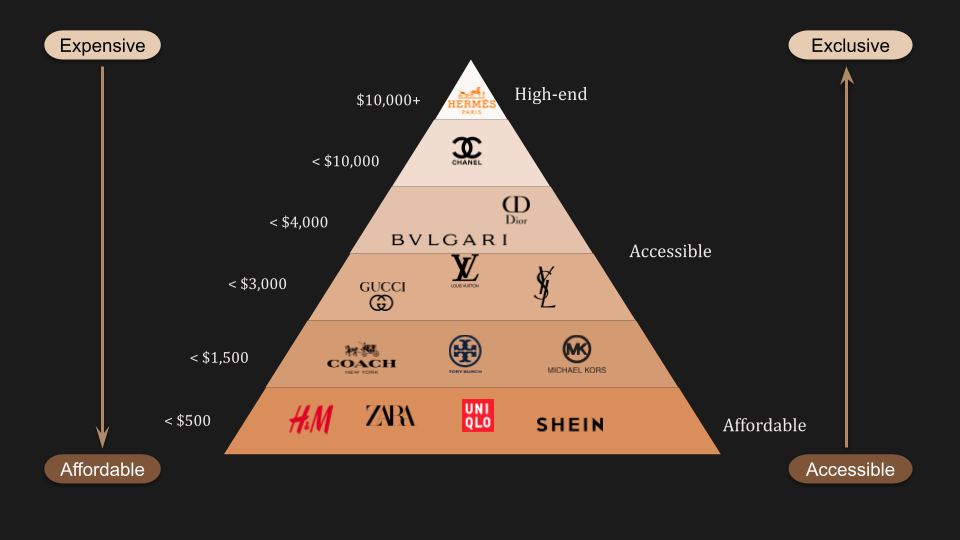Brand Overview
Let us start with an overview of brands' status regarding the unit price of their best-selling handbags (Y-value), estimated sales volume (X-value), and annual revenue (represented by the radii of circles). Situating in the top left corner is high-end brand Hermes, who intentionally limits volume of its leather goods circulating in the market to preserve its scarcity. In the bottom right corner, we have fast fashion brand H&M with affordable prices and a significantly large sales volume comparing with Hermes. Because of the mathematical relationship among unit price, volume, and revenue (Unit Price x Volume = Revenue), both unit price and volume play a role in the magnitude of these fashion companies' revenue.
Unit Pricing
Luxury brands are known for their expansiveness and pricing strategy. They aspire to price their products at the sweet spot of scarcity and affordability to attract costumers with different purchasing powers. On the contrary, affordable prices are the selling point of fast fashion brands. Their well-developed global supply chain and business ecosystem makes their economical prices extremely competitive.
Volume
Luxury brands leverages "artificial scarcity" by limiting both the productions and sales channels. A typical strategy involves acquiring traditional hand workshops and tightening sales quotas of popular models. Contrastingly, fast fashion focuses on "the economies of scale" by frequently releasing new products and having end-of-season flash sales. The key to their success is selling more within a shorter time frame.
Revenue
Both high-end luxury brands such as Hermes and Chanel and fast fashion brand such as H & M perform strong in their revenue. On the contrary, revenue generated by brands situating in the middle of the fashion pyramid is around one third of the high-end brands' revenue and one sixth of the fast fashion industry.
